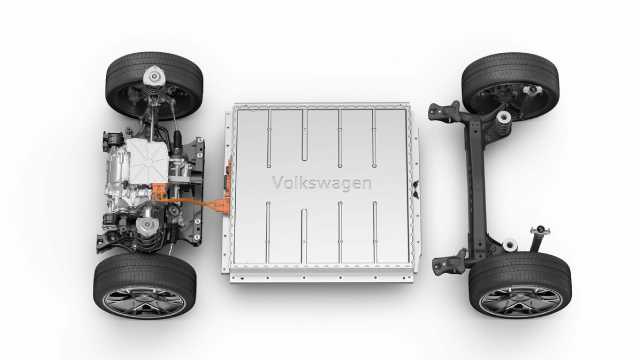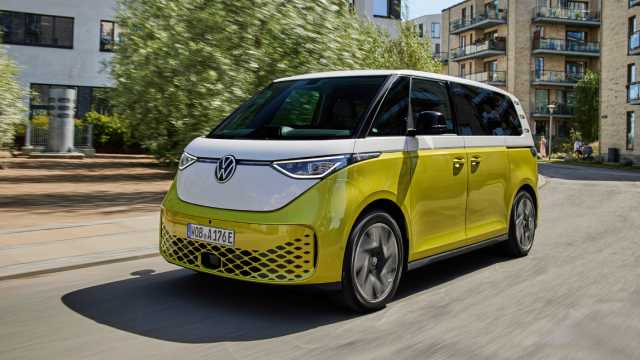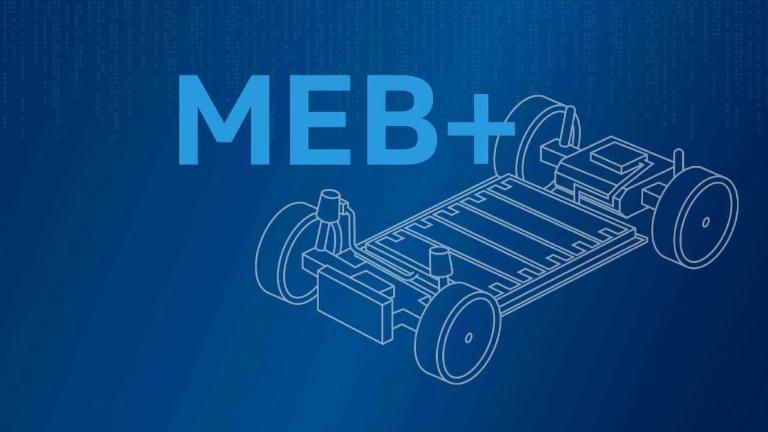Increased range and charging speed: the evolution of the MEB platform
Launched in 2019 with the debut of the Volkswagen ID.3, the MEB platform has shown its potential and, so far, been the basis for more than 670,000 vehicles across the Volkswagen Group. In the next few years it will evolve into the MEB+, a technological solution that will bring benefits in many ways.
The MEB platform - Modular Electric Drive System - represents the foundation on which the Volkswagen Group has developed its electrification strategy. It is a technological architecture specifically designed for electric cars and is so flexible that it can be used to build very different models: from compact cars like the ID.3, which debuted in 2019, to vans like the ID. Buzz.
Since the market launch of the ID.3, more than half a million vehicles of the ID. family have been built on the MEB, proving all the qualities of the platform, which is now preparing to evolve into MEB+ with the aim of ensuring greater performance and long-term competitiveness.
Range and efficiency
When Volkswagen Group engineers began developing the MEB platform, their ultimate goal was to make the best possible electric car at the best possible price. In addition to comfort and suitability for everyday use, the engineers' focus was on range and efficiency - the two main features of any electric car.
From the beginning, therefore, it was clear that as much space as possible had to be created for the battery system. "For the first time, we had the chance to develop the vehicle practically around the battery", explains Frank Blome, who as Head of the Battery Cell Business Unit was personally involved in the development of the MEB platform.

From the MQB to the MEB
Before the MEB platform, there was already the MQB - Modular Cross-Sectional Toolkit - which had proven to be very successful and had made it possible to build many different cars from the same base. However, the architecture had to be fundamentally rethought to achieve the best possible result with electric propulsion.
The battery system is located in the lowest point of the underbody, between the front and rear axles: thus the wheelbase and track width are easy to change. As a result, a very wide variety of vehicle concepts can be realised on one and the same platform - from compact city cars to large SUVs. With the MEB platform, the Volkswagen Group has created the basis for cost-efficient production that makes e-mobility affordable for almost everyone, and at the same time offers all customers the right car for their individual needs.

One platform for all
The MEB platform is available to many Volkswagen Group brands and is currently used for a dozen models. In addition to the Volkswagen ID. family models, including ID. BUZZ from Volkswagen Commercial Vehicles, electric vehicles from Audi, CUPRA and ŠKODA are MEB-based. So far, more than 670,000 vehicles have been made on a MEB basis.
Another key feature is the modular battery, which allows the capacity of the battery to be adapted according to individual needs. For example, for those who use the ID.3 mainly in the city, the 58 kWh battery may be sufficient, which lowers the purchase price. On the other hand, those who frequently travel long distances may choose the 77 kWh battery. The range for the various models, depending on battery capacity, extends from more than 400 km to over 550 km. On top of that, the MEB platform defines a large living space inside the vehicle: in practical terms, the Volkswagen ID.3 has the exterior dimensions of a Golf, but the interior volume of a Passat.
Carbon neutral and automated driving
Vehicles based on the MEB platform produced in Europe are carbon neutral, meaning they are delivered to customers with a CO2-neutral balance. A result made possible, for example, through the use of green energy from renewable sources in production; any CO2 that cannot be avoided during production is offset through support for certified climate protection projects. In addition, only animal-free materials, which means not of animal origin, are used for the interior.
In the next few years, the MEB platform will be further developed and become MEB+: the entire digital infrastructure will be optimized to support more advanced automated driving functions, and the Volkswagen Group's new generation of batteries, which will integrate the so-called unified cell, will be used. This will enable ranges of up to 700 km and improve charging times, with charging speeds of up to 175-200 kW possible in the future.
The range of vehicles based on the MEB platform will be significantly expanded. Ten new Volkswagen electric models will be launched by 2026, including an entry-level model that will for about 25,000 euros. New cars in the performance and premium segments are also being planned. This will give even more choice, and in parallel will further increase comfort, quality, and reliability.
Source: Volkswagen - Shaping Mobility Hub
VGI | Responsible OU: VP | Creation date: article date | Class 9.1
